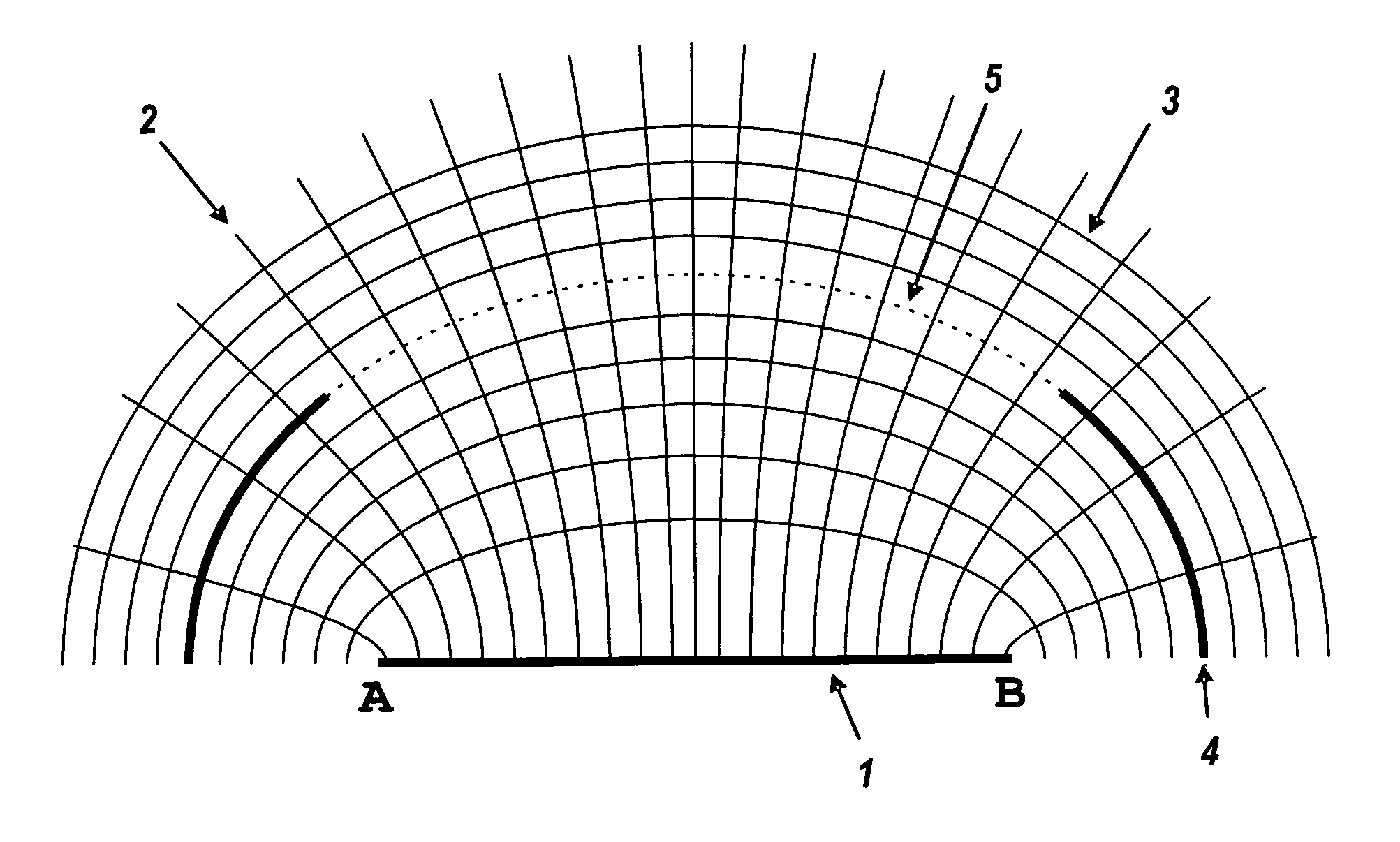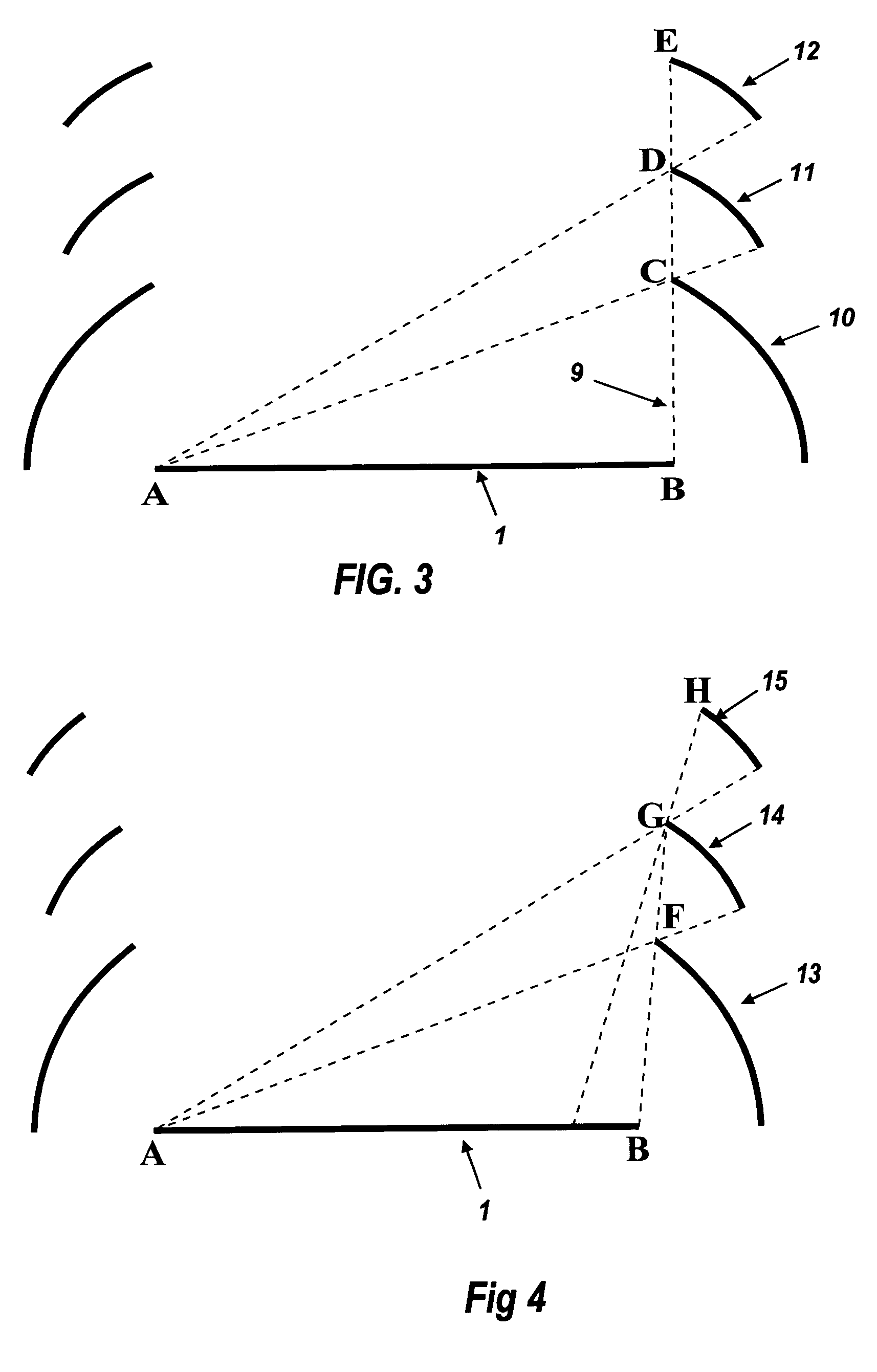LED luminance-augmentation via specular retroreflection, including collimators that escape the étendue limit
a technology of specular retroreflection and luminance augmentation, which is applied in the field of beamforming illumination systems, can solve the problems of étendue-invariance limitation of their performance, and achieve the effects of increasing the effective luminance of sources, and reducing the diameter of optical systems
- Summary
- Abstract
- Description
- Claims
- Application Information
AI Technical Summary
Benefits of technology
Problems solved by technology
Method used
Image
Examples
Embodiment Construction
[0058]A better understanding of various features and advantages of the present luminaires will be obtained by reference to the following detailed description of the invention and accompanying drawings, which set forth illustrative embodiments. Corresponding reference characters indicate corresponding components throughout the several views of the drawings.
[0059]Flowlines are well known in the field of non-imaging optics, being defined at any point receiving light from a source. At some viewing point, rays are received from across the source, and the rays from the source's edges define the edge of the source image. In the case of the following Figures, the flowlines are everywhere tangent to the bisectors of the angle formed by the rays from the two edges of the source.
[0060]FIG. 1 is a two-dimensional view across a light source 1, emitting upwards between point A and point B. Flowlines 2 are confocal hyperbolas with those points A and B as their foci. At every point upon the flowlin...
PUM
 Login to View More
Login to View More Abstract
Description
Claims
Application Information
 Login to View More
Login to View More - R&D
- Intellectual Property
- Life Sciences
- Materials
- Tech Scout
- Unparalleled Data Quality
- Higher Quality Content
- 60% Fewer Hallucinations
Browse by: Latest US Patents, China's latest patents, Technical Efficacy Thesaurus, Application Domain, Technology Topic, Popular Technical Reports.
© 2025 PatSnap. All rights reserved.Legal|Privacy policy|Modern Slavery Act Transparency Statement|Sitemap|About US| Contact US: help@patsnap.com



